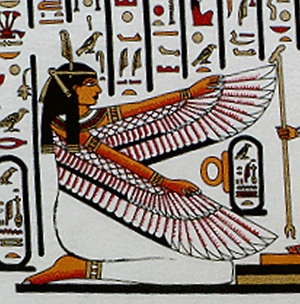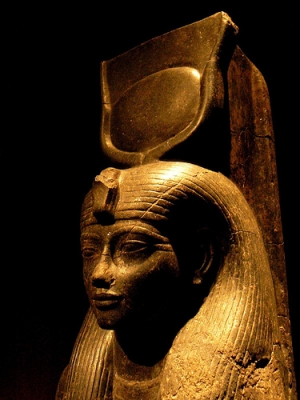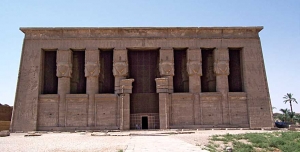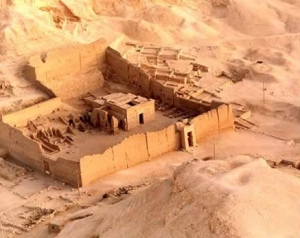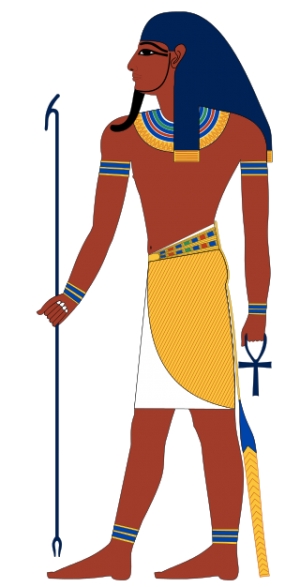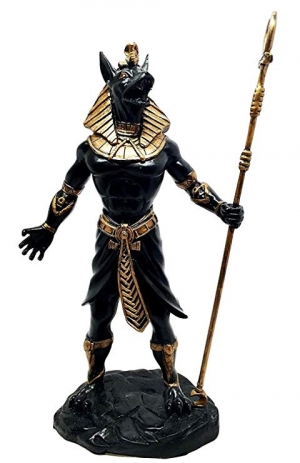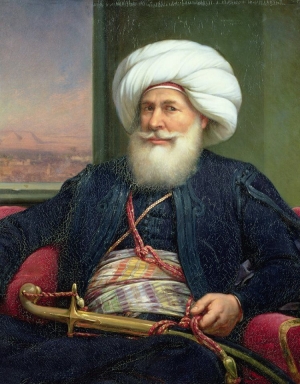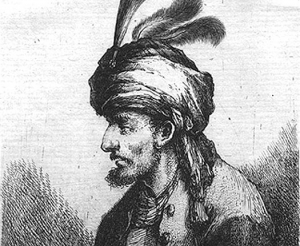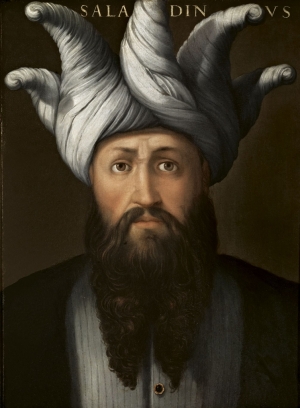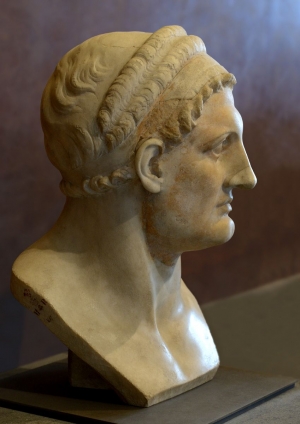+2 0122-345-3028
This email address is being protected from spambots. You need JavaScript enabled to view it.
Super User
Maat
Maat
The concept of maat stood for the ancient Egyptian system of order and values; it denoted equilibrium, justice, and truth. The ethical opposite was Isfet, standing for disorder, injustice and falsehood. Every ruler had to maintain maat and guarantee it to the gods. However, even ordinary people must follow the dictates of maat, or they would not survive when they died and came to judgment. As a goddess, Maat was personified as a woman with an ostrich plume on her head. Regarded as the daughter of Re, she was worshiped in a cult of her own from the New kingdom at the latest, as her temple at Karnak indicates.
Hathor
Hathor
In Ancient Egyptian Hieroglyphics : ḥwt-ḥr; in Greek: Ἅθωρ, meaning "mansion of Horus") is an ancient Egyptian goddess who personified the principles of joy, feminine love, and motherhood. She was one of the most important and popular deities throughout the history of ancient Egypt.
Hathor was worshipped by royalty and common people alike. In tomb paintings, she is often depicted as "Mistress of the West", welcoming the dead into the next life. In other roles, she was a goddess of music, dance, foreign lands, and fertility. She was believed to assist women in childbirth. She was also believed to be the patron goddess of miners.
The cult of Hathor predates the historic period, and the roots of devotion to her are therefore difficult to trace. Though it may be a development of predynastic cults that venerated fertility, and nature in general, represented by cows.
Hathor is commonly depicted as a cow goddess with horns in which is set a sun disk with Uraeus. Twin feathers are also sometimes shown in later periods as well as a menat necklace. Hathor may be the cow goddess who is depicted from an early date on the Narmer Palette and on a stone urn dating from the 1st dynasty that suggests a role as sky-goddess and a relationship to Horus who, as a sun god, is "housed" in her.
The ancient Egyptians viewed reality as multi-layered, and saw deities who merged while retaining divergent attributes and myths as complementary rather than contradictory. Hathor's relationship with Ra is complicated - she is described as his mother, daughter, and wife (though not necessarily simultaneously,) and like Isis, is at times described as the mother of Horus. She is also associated with Bast.
The cult of Osiris promised eternal life to those deemed morally worthy. Originally, the justified dead became an Osiris regardless of gender, but by early Roman times only men were identified with Osiris, with women being identified with Hathor.
The ancient Greeks, meanwhile, sometimes identified Hathor with the goddess Aphrodite.
Early period
Hathor is ambiguously depicted until the fourth dynasty.In the historical era Hathor is shown using the imagery of a cow deity. Artifacts from pre-dynastic times depict cow deities using the same symbolism as used in later times for Hathor and Egyptologists speculate that these deities may be one and the same or precursors to Hathor.
A cow deity appears on the belt of the King on the Narmer Palette dated to the pre-dynastic era, and this may be Hathor or, in another guise, the goddess Bat with whom she is linked and later supplanted. At times they are regarded as one and the same goddess, though likely having separate origins, and reflections of the same divine concept. The evidence pointing to the deity being Hathor in particular is based on a passage from the Pyramid texts which states that the King's apron comes from Hathor.
A stone urn recovered from Hierakonpolis and dated to the first dynasty has on its rim the face of a cow deity with stars on its ears and horns that may relate to Hathor's, or Bat's, role as a sky-goddess. Another artifact from the first dynasty shows a cow lying down on an ivory engraving with the inscription "Hathor in the Marshes" indicating her association with vegetation and the papyrus marsh in particular. From the Old Kingdom she was also called Lady of the Sycamore in her capacity as a tree deity
Hathor by jimmy
Hathor by jimmy
Other Names: Het-Hert, Hetheru
Patron of: the sky, the sun, the queen, music, dance and the arts.
Appearance: A cow bearing the sun disk between her horns, or a woman in queenly raiment wearing the sun disk and horns on her head. Depictions of her as a woman with a cow's head do not occur until later periods.
Description: Hathor is a very ancient goddess, dating to predynastic times. When dynastic rule began, as Horus was associated with the king, Hathor was with the queen. Her name translates to "The House of Horus," and so she is associated with the royal family. But also, as the entire world could be said to be the House of Horus, Hathor can be seen as the mother-goddess of the whole world, similar to Isis.
Hathor's cult is unusual, as both men and women were her priests (most deities had clerics of the same gender as they). Many of them were artisans, musicians, and dancers who turned their talents into creating rituals that were nothing short of works of art. Music and dance were part of the worship of Hathor like no other deity in Egypt. Hathor herself was the incarnation of dance, and stories were told of how Hathor danced before Ra when he was in despair to cheer him up.
Inspiration was also Hathor's bailiwick, and many would come to the temples of Hathor to have their dreams explained or to beseech her for her aid in creation, much in the same way the Greeks invoked the Nine Muses.
Worship: Worshipped throughout all of Egypt, her cult center was at Dendera in Upper Egypt.
Hathor by Caroline
Hathor, Goddess of Love, Music, Beauty by Caroline Seawright
Hathor (Ht-hr - House of Horus)
She was a goddess of many things, among them she was a:
- •Celestial goddess: The Mistress of Heaven
- •Goddess of love, music and beauty: the Goddess of Love, Cheerfulness, Music, and Dance,
- •Goddess of women, firtility, children and childbirth: The Mother of Mothers, the Celestial Nurse,
- •Goddess of destruction and drunkeness: The Vengeful Eye of Ra, the Lady of Drunkeness,
- •Goddess of the dead: Lady of the West
She was also known as the Mistress of Life, the Great Wild Cow, the Golden One, the Mistress of Turquoise, Lady of Dendera (her cult centre was located at Dendera), Mistress of Qis, Lady to the Limit (of the Universe), Lady of Punt (perhaps an area in present day Somalia - see Hatshepsut's Expedition to Punt), the Powerful One, the Mistress of the Desert, Lady of the Southern Sycamore (she was depicted as handing out water to the deceased from a sycamore tree, hence a goddess of moisture as well as of the dead, both relating to the sycamore tree), Lady of Malachite (eye makeup from Sinai was made from green malachite - Sinai was one of Hathor's domains)... and many other names, besides.
The reason that she has so many names, one would assume, is because she is an ancient goddess - she seems to have been mentioned as early as the 2nd Dynasty. She may even been associated with the Narmer palette - although the two human faced bovines may also have been a representation of the king.
It is interesting to note, though, that there is not a personal name of the goddess mentioned in the list of names - they are all titles.
Another interesting thing about Hathor is found in one particular Egyptian tale - when the hero of the story was born, the 'Seven Hathors', disguised as seven young women, appeared and announced his fate. They seemed to be linked with not only fortune telling, but to being questioners of the soul on its way to the Land of the West. These goddesses were worshiped in seven cities: Thebes, Heliopolis, Aphroditopolis, Sinai, Momemphis, Herakleopolis, and Keset. They are linked to the Pleiades.
Generally, Hathor is pictured as a woman with cow's horns with the sun between them (Eye of Ra, Golden One), or as a beautiful woman with cow's ears, or a cow wearing the sun disk between her horns, or even as a lioness or a lion-headed woman (destruction and drunkeness). She often is seen carrying a sistrum, an ancient musical instrument (hence a goddess of music). The sycamore was sacred to her (Lady of the Southern Sycamore). She is said to be the mother of the pharaoh, and is often depicted in a nurturing role, suckling the pharaoh when he was a child (hence a goddess of motherhood).
The Eye of Ra
One of the tales of Hathor was how she was originally a goddess of destruction (Hathor-Sekhmet), and how she came to be the goddess of happier things:
Then Ra took on the shape of a man and became the first Pharaoh, ruling over the whole country for thousands and thousands of years, and giving such harvests that for ever afterwards the Egyptians spoke of the good things "which happened in the time of Ra".
But, being in the form of a man, Ra grew old. In time men no longer feared him or obeyed his laws. They laughed at him, saying: "Look at Ra! His bones are like silver, his flesh like gold, his hair is the colour of lapis lazuli!"
Ra was angry when he heard this, and he was more angry still at the evil deeds which men were doing in disobedience to his laws. So he called together the gods whom he had made - Shu and Tefnut and Geb and Nut - and he also summoned Nun. Soon the gods gathered about Ra in his Secret Place, and the goddesses also. But mankind knew nothing of what was happening, and continued to jeer at Ra and to break his commandments. Then Ra spoke to Nun before the assembled gods: "Eldest of the gods, you who made me; and you gods whom I have made: look upon mankind who came into being at a glance of my Eye. See how men plot against me; hear what they say of me; tell me what I should do to them. For I will not destroy mankind until I have heard what you advise."
Then Nun said: "My son Ra, the god greater than he who made him and mightier than those whom he has created, turn your mighty Eye upon them and send destruction upon them in the form of your daughter, the goddess Sekhmet."
Ra answered: "Even now fear is falling upon them and they are fleeing into the desert and hiding themselves in the mountains in terror at the sound of my voice."
"Send against them the glance of your Eye in the form Sekhmet!" cried all the other gods and goddesses, bowing before Ra until their foreheads touched the ground.
So at the terrible glance from the Eye of Ra his daughter Sekhmet came into being, the fiercest of all goddesses. Like a lion she rushed upon her prey, and her chief delight was in slaughter, and her pleasure was in blood. At the bidding of Ra she came into Upper and Lower Egypt to slay those who had scorned and disobeyed him: she killed them among the mountains which lie on either side of the Nile, and down beside the river, and in the burning deserts. All whom she saw she slew, rejoicing in slaughter and the taste of blood.
Presently Ra looked out over the land and saw what Sekhmet had done. Then he called to her, saying: "Come, my daughter, and tell me how you have obeyed my commands."
Sekhmet answered with the terrible voice of a lioness as she tears her prey: "By the life which you have given me, I have indeed done vengeance on mankind, and my heart rejoices."
Now for many nights the Nile ran red with blood, and Sekhmet's feet were red as she went hither and thither through all the land of Egypt slaying and slaying.
Presently Ra looked out over the earth once more, and now his heart was stirred with pity for men, even though they had rebelled against him. But none could stop the cruel goddess Sekhmet, not even Ra himself: she must cease from slaying of her own accord -and Ra saw that this could only come about through cunning.
So he gave his command: "Bring before me swift messengers who will run upon the earth as silently as shadows and with the speed of the storm winds." When these were brought he said to them: "Go as fast as you can up the Nile to where it flows fiercely over the rocks and among the islands of the First Cataract; go to the isle that is called Elephantine and bring from it a great store of the red ochre which is to be found there."
The messengers sped on their way and returned with the blood-red ochre to Heliopolis, the city of Ra where stand the stone obelisks with points of gold that are like fingers pointing to the sun. It was night when they came to the city, but all day the women of Heliopolis had been brewing beer as Ra bade them.
Ra came to where the beer stood waiting in seven thousand jars, and the gods came with him to see how by his wisdom he would save mankind.
"Mingle the red ochre of Elephantine with the barley-beer," said Ra, and it was done, so that the beer gleamed red in the moonlight like the blood of men.
"Now take it to the place where Sekhmet proposes to slay men when the sun rises," said Ra. And while it was still night the seven thousand jars of beer were taken and poured out over the fields so that the ground was covered to the depth of nine inches -- three times the measure of the palm of a man's hand-with the strong beer, whose other name is "sleep-maker".
When day came Sekhmet the terrible came also, licking her lips at the thought of the men whom she would slay. She found the place flooded and no living creature in sight; but she saw the beer which was the colour of blood, and she thought it was blood indeed -- the blood of those whom she had slain.
Then she laughed with joy, and her laughter was like the roar of a lioness hungry for the kill. Thinking that it was indeed blood, she stooped and drank. Again and yet again she drank, laughing with delight; and the strength of the beer mounted to her brain, so that she could no longer slay.
At last she came reeling back to where Ra was waiting; that day she had not killed even a single man.
Then Ra said: "You come in peace, sweet one." And her name was changed to Hathor, and her nature was changed also to the sweetness of love and the strength of desire. And henceforth Hathor laid low men and women only with the great power of love. But for ever after her priestesses drank in her honour of the beer of Heliopolis coloured with the red ochre of Elephantine when they celebrated her festival each New Year.
Note that in the above tale, the goddess called 'Eye of Ra' was Hathor who became 'Sekhmet', then 'Hathor'. But afterwards, Sekhmet and Hathor were two seperate deities, both having claim to the title 'Eye of Ra'!
Atum
Atum
Atum in Hieroglyphics’ Coptic language Atoum
Sometimes rendered as Atem or Tem, is an important deity in Egyptian mythology.
Name
Atum's name is thought to be derived from the verb tm which means to complete or finish. Thus he has been interpreted as being the "complete one" and also the finisher of the world, which he returns to watery chaos at the end of the creative cycle. As creator he was seen as the underlying substance of the world, the deities and all things being made of his flesh or alternatively being his ka
Origins
Atum is one of the most important and frequently mentioned deities from earliest times, as evidenced by his prominence in the Pyramid Texts, where he is portrayed as both a creator and father to the king
Role
In the Heliopolitan creation myth, Atum was considered to be the first god, having created himself, sitting on a mound (benben) (or identified with the mound itself), from the primordial waters (Nu)
Early myths state that Atum created the god Shu and goddess Tefnut by spitting them out of his mouth.[
To explain how Atum did this, the myth uses the metaphor of masturbation, with the hand he used in this act representing the female principle inherent within him. Other interpretations state that he has made union with his shadow.
In the Old Kingdom the Egyptians believed that Atum lifted the dead king's soul from his pyramid to the starry heavens.
He was also a solar deity, associated with the primary sun god Ra. Atum was linked specifically with the evening sun, while Ra or the closely linked god Khepri were connected with the sun at morning and midday.
In the Book of the Dead, which was still current in the Graeco-Roman period, the sun god Atum is said to have ascended from chaos-waters with the appearance of a snake, the animal renewing itself every morning.
Atum is the god of pre-existence and post-existence. In the binary solar cycle, the serpentine Atum is contrasted with the ram-headed scarab Khepri—the young sun god, whose name is derived from the Egyptian hpr "to come into existence". Khepri-Atum encompassed sunrise and sunset, thus reflecting the entire solar cycle
Relationship to other gods
Atum was a self-created deity, the first being to emerge from the darkness and endless watery abyss that existed before creation. A product of the energy and matter contained in this chaos, he created his children—the first deities, out of loneliness. He produced from his own sneeze, or in some accounts, semen, Shu, the god of air, and Tefnut, the goddess of moisture. The brother and sister, curious about the primeval waters that surrounded them, went to explore the waters and disappeared into the darkness. Unable to bear his loss, Atum sent a fiery messenger, the Eye of Ra, to find his children. The tears of joy he shed on their return were the first human beings
Iconography
He is usually depicted as a man wearing either the royal head-cloth or the dual white and red crown of Upper Egypt and Lower Egypt, reinforcing his connection with kingship. Sometimes he also is shown as a serpent, the form he returns to at the end of the creative cycle, and also occasionally as a mongoose, lion, bull, lizard, or ape
Worship
Atum's worship centered on the city of Heliopolis (Egyptian: Annu or Iunu). The only surviving remnant of Heliopolis is the Temple of Re-Atum obelisk located in Al-Masalla of Al-Matariyyah, Cairo.
It was erected by Senusret I of the Twelfth dynasty, and still stands in its original position
Anubis
Anubis
([pronunciation?]; Greek: Ἄνουβις) is the Greek name for a jackal-headed god associated with mummification and the afterlife in ancient Egyptian religion. According to the Akkadian transcription in the Amarna letters, Anubis' name was vocalized in Egyptian as Anapa.The oldest known mention of Anubis is in the Old Kingdom pyramid texts, where he is associated with the burial of the pharaoh.[4] At this time, Anubis was the most important god of the dead but he was replaced during the Middle Kingdom by Osiris.
He takes names in connection with his funerary role, such as He who is upon his mountain, which underscores his importance as a protector of the deceased and their tombs, and the title He who is in the place of embalming, associating him with the process of mummification. Like many ancient Egyptian deities, Anubis assumes different roles in various contexts.
Anubis also attends the weighing scale in the Afterlife during the "Weighing Of The Heart".
Anubis' wife is a goddess called Anput. His daughter is the goddess Kebechet.
Anubis was associated with the mummification and protection of the dead for their journey into the afterlife. He was usually portrayed as a half human, half jackal, or in full jackal form wearing a ribbon and holding a flail in the crook of its arm.[7] The jackal was strongly associated with cemeteries in ancient Egypt, since it was a scavenger which threatened to uncover human bodies and eat their flesh.[8] The distinctive black color of Anubis "did not have to do with the jackal [per se] but with the color of rotting flesh and with the black soil of the Nile valley, symbolizing rebirth."
Anubis is depicted in funerary contexts where he is shown attending to the mummies of the deceased or sitting atop a tomb protecting it. In fact, during embalming, the "head embalmer" wore an Anubis costume. The critical weighing of the heart scene in the Book of the Dead also shows Anubis performing the measurement that determined the worthiness of the deceased to enter the realm of the dead (the underworld). New Kingdom tomb-seals also depict Anubis sitting atop the nine bows that symbolize his domination over the enemies of Egypt.
Embalmer
One of the roles of Anubis was "Guardian of the Scales".Deciding the weight of "truth" by weighing the Heart against Ma'at, who was often depicted as an ostrich feather, Anubis dictated the fate of souls. In this manner, he was a Lord of the Underworld, only usurped by Osiris.
Anubis is a son of Ra in early myths, but later he became known as son of Osiris and Nephthys, and in this role he helped Isis mummify his dead father.Indeed, when the Myth of Osiris and Isis emerged, it was said that when Osiris had been killed by Set, Osiris' organs were given to Anubis as a gift. With this connection, Anubis became the patron god of embalmers: during the funerary rites of mummification, illustrations from the Book of the Dead often show a priest wearing the jackal mask supporting the upright mummy. Anubis' half-brother is Horus the Child, son of Osiris and Isis.
Perceptions outside Egypt
In later times, during the Ptolemaic period, Anubis was merged with the Greek god Hermes, becoming Hermanubis.The centre of this cult was in uten-ha/Sa-ka/ Cynopolis, a place whose Greek name simply means "city of dogs". In Book XI of "The Golden Ass" by Apuleius, we find evidence that the worship of this god was maintained in Rome at least up to the 2nd century. Indeed, Hermanubis also appears in the alchemical and hermetical literature of the Middle Ages and the Renaissance.
Although the Greeks and Romans typically scorned Egypt's animal-headed gods as bizarre and primitive (Anubis was known to be mockingly called "Barker" by the Greeks), Anubis was sometimes associated with Sirius in the heavens, and Cerberus in Hades. In his dialogues (e.g. Republic 399e, 592a), Plato has Socrates utter, "by the dog" (kai me ton kuna), "by the dog of Egypt", "by the dog, the god of the Egyptians" (Gorgias, 482b), for emphasis. Anubis is also known as the god of mummification and death. Instead like other jackals Anubis' head was black to resemble the god of death.
Birth
Anubis was the son of Nephthys, and his father was Osiris. One myth says that Nephthys got Osiris drunk and the resultant seduction brought forth Anubis. Yet another says she disguised herself as Isis and seduced Osiris and subsequently gave birth to Anubis. Usually, Anubis is portrayed as the son of Nephthys and Set, Osiris' brother and the god of the desert and darkness.
Muhammad Ali Pasha
Muhammad Ali Pasha 1805 -1848
Muhammad Ali Pasha ( 4 March 1769 – 2 August 1849 ) started as an Ottoman Albanian commander in the Ottoman army and rose to the position of the ruler of Egypt. He is regarded as the father and founder of modern Egypt due to the extensive reforms to the economic, military and cultural aspects of Egypt, he used his leadership skills, political intelligence, and cunning to bring peace, prosperity, law, and order to the country.
The Road to became the Rule of Egypt
In 1798, Egypt was under the weak rule of the Ottoman Empire, but was also occupied by the French forces under the control of Napoleon Bonaparte himself who destroyed the Mamluk rulers on the battlefield but in 1801 the French forces had to withdraw which left a vacuum which Muhammad Ali seized the chance and was appointed the ottoman (wali) governor of Egypt to take control of the Ottoman army to re-occupy the province but he had other plans. He used his support of the general public and the religious establishment to work on taking more control and charger of the country and to eliminate the Mamluks who controlled Egypt for more than 600 years. On the First march in 1181, the Mamluks gathered in the citadel and Muhammad Ali’s troops began killing all the sixty-four Mamluks, including twenty-four commanders, he then dispatched his troops through Egypt destroy any remaining traces of the Mamluk forces. He dreamed of creating his own dynasty and his own kingdom away from the decaying Ottoman Empire, that’s why he transformed Egypt into a regional power and declared himself the rightful successor.
Muhammad Ali Pasha Achievements in Egypt
He understood that if he wanted to detach Egypt from the Ottoman Empire, he has to make it more economically and militarily powerful. He developed a strategy based on agriculture, he planted crops for the sole purpose of exportation like rice, sugarcane, and especially cotton. All the income from the agricultural production and export was used to develop public work like irrigation, canals, dams, and barrages. He also disbanded his army and created a fleet and an army of pure Egyptians but commanded by the Turks and trained by French commanders in the art of war. He also constructed Western-style schools to train doctors, engineers, veterinarians and other specialists. He is also sent educational missions to Europeans for training in modern techniques to complete his bureaucrats. He creates an industrial age in Egypt as he built factories to produce sugar, glass, and textile that competes with the European product, and ships, weapons for the new army and navy. There was also a dark side to his master plan as he added excessive taxation to pay for all his expensive projects which led him to lost a great deal of his public support as his over control on the agriculture, sector his monopolization of trade led to a bad relationship with Britain which saw Egypt as a threat. He also tried to expand his empire by invading Syria in 1831, which all the great forces of Britain, France, and Russia to hold him from getting close to Istanbul. Muhammad Ali had no choose put to sign the 1841 treat, which commands Muhammad Ali to be stripped of all the conquered territory except Sudan but in return granted the hereditary governorship of Egypt for life.
Muhammad Ali Pasha Legacy
He passed the rule of Egypt to his son Ibrahim in 1848 that died shortly after and he died in 1849. He was able to leave a great legacy which shows in the famous Muhammad Ali mosque in Cairo that you can visit and discover the beauty of this archaeological site during your trip to Egypt package. Under his rule, Egypt became a powerful nation and entered the international community of nations as an independent state, not as a province of the Ottoman Empire. He built a powerful army that relies on the scientific process, opened Egypt to the European commercial and trade and most importantly improve education to match the European standards.
Ali Bey al Kabir
Ali Bey al-Kabir
Ali Bey was born in 1728 at Abkhazia and was of ethnic Georgian origin., he was "supposedly" the son of a certain David, a Greek Orthodox priest. He was kidnapped and brought to Cairo in 1743 where he was sold into slavery. He was recruited into the Mamluk force in which he gradually rose in ranks and influence, winning the top office of Shaykh al-Balad (chief of the country) in 1760. Attempting to gain complete control, he sought to exile his rival Abd el-Rahman in 1762 when the latter was conducting the caravan of Mecca, but was instead sentenced to exile at Gaza; Ali Bey started for that city, but on the third day made to the Hijaz where he was joined by a number of his followers, and from there travelled to Girga where he spent the next two years, until his supporters in Cairo effected his recall.
"During his time in power, he successfully expanded Egypt's trade with Britain and France. He also hired European advisers to the military and bought European weapons".
However, "... he did not make use of native Egyptians or call in foreigners for technical advice. He made no effort to build a modern army..."
In 1768, Ali Bey deposed the Ottoman governor Rakım Mehmed Pasha and assumed the post of acting governor.
He stopped the annual tribute to the Sublime Porte and in an unprecedented usurpation of the Ottoman Sultan's privileges had his name struck on local coins in 1769 (alongside the sultan's emblem), effectively declaring Egypt's independence from Ottoman rule. In 1770 he gained control of the Hijaz and a year later temporarily occupied Syria, thereby reconstituting the Mamluk state that had disappeared in 1517. However, a few days after a major victory over Governor Uthman Pasha al-Kurji by the allied forces of Zahir al-Umar and Ali Bey's forces on 6 June 1771, Abu al-Dhahab, the commander of his troops in Syria, refused to continue the fight after an Ottoman agent stirred up mistrust between him and Ali Bey, and hastily returned to Egypt.
As a result, Ali Bey lost power in 1772. The following year, he was killed in Cairo.
Salah el din el ayyubi Saladin (Salah al-Din Yusuf Ibn Ayyub)
Salah el din el ayyubi Saladin (Salah al-Din Yusuf Ibn Ayyub)
Saladin (1138-1193) was born into a prominent Kurdish family, and it is said that on the night of his birth, his father, Najm ad-Din Ayyub, gathered his family and moved to Aleppo. There, his father entering the service of 'Imad ad-Din Zangi ibn Aq Sonqur, the powerful Turkish governor in northern Syria. Growing up in Ba'lbek and Damascus, Saladin was apparently an undistinguished youth, with a greater taste for religious studies than military training. There appears to have been few if any depictions of Saladin, but apparently tradition holds that he was a short man with a neat beard and even somewhat frail.
His formal career began when he joined the staff of his uncle Asad ad-Din Shirkuh, an important military commander under Nur al-Din. Nur al-Din, the ruler of Damascus and Aleppo, succeeded his father, Zengi, after that ruler's death, engaged in a race with the crusader Kingdom of Jerusalem to take over Egypt. During three military expeditions led by Shirkuh into Egypt to prevent its falling to the Latin-Christian (Frankish) rulers of the states established by the First Crusade, a complex, three-way struggle developed between Amalric I, the Latin king of Jerusalem, Shawar, the powerful vizier of the Egyptian Fatimid caliph, and Shirkuh.
In the last of these military expeditions, together with his uncle, Saladin approached the walls of Cairo on January 2, 1169 at which point the Franks, who had the city of Cairo under siege, retreated. Six days later, after allowing the Franks to evacuate unopposed, his troops reached the walls themselves. Thereafter, Saladin lured the rather untrustworthy Shawar into an ambush on January 18th, killing him. His uncle, Shirkuh then became vizier. However, he also died unexpectedly on the 23rd of March.
Subsequently, Saladin became vizier to the last Fatimid caliph (who died in 1171), earning him the title al-Malik al-Nasir ('the prince defender'), and therefore his relations and successors were all given this title. It took Saladin, or more properly, Salah al-Din Yusuf Ibn Ayyub (meaning Righteousness of Faith, Joseph, Son of Job), only a few more years to became the sole master of Cairo and the first Ayyubid sultan of Egypt in 1174. The Fatimid caliph's death on September 12th of 1171 left the reins of power in Saladin's hands, under the suzerainty of Nur al-Din. The situation could not have lasted indefinitely, but the death of Nur al-Din on May 15, 1174 allowed Saladin, as the sole ruler of Egypt, to assert his right to the throne. Saladin soon moved out of Egypt and occupied Damascus and other Syrian towns, though Egypt continued to be a base of his operations.
Saladin claimed legitimacy not from his lineage, but from his upholding of Sunniorthodoxy. The Fatimids had failed, despite their long rule, to impart their faith to the mass of the Egyptian population, and Saladin and his successors addressed the task of making Egypt once more a center of orthodox belief.
Saladin, like the great Amr Ibn el 'As, is a romantic historical figure in whom it is difficult to find much fault. In fact, some of his most ardent admirers have often been his Christian biographers. They, as much as the Arabs, have made a myth of him, and what always attracted Europeans to Saladin was his almost perfect sense of cultured chivalry. It is said that the crusader knights learned a great deal about chivalry from him. For example, when the Crusaders took Jerusalem in 1099 they murdered virtually all of its inhabitants, boasting that parts of the city were knee-high in blood. When Saladin re-took the city in 1187, he spared his victims, giving them time to leave and safe passage. It was, after all, a holy city, and it was captured by the Muslims in a 'just war'.
In fact, despite his fierce opposition to the Christian powers, Saladin achieved a great reputation in Europe as a chivalrous knight, so much so that there existed by the 14th century an epic poem about his exploits, and Dante included him among the virtuous pagan souls in Limbo. His relationship with King Richard I of England, who managed to repel him in battle in 1191, was one of mutual respect as well as military rivalry. When Richard was wounded, Saladin even offered the services of his personal physician.
Trade and commerce was essentially built into the Muslim faith and Mohammed himself had laid down the religious rules for honorable behavior because caravan trade and business demanded a particular kind of trust in the words of others. Thus, it is said that Largesse was an essential part of Saladin's faith.
Saladin brought an entirely different concept of a city to Cairo after the Fatimids, because he wanted a unified, thriving, fortified place, protected by strong walls and impregnable defenses, but functioning internally with a great deal of commercial and cultural freedom, and with no private or royal enclaves and no fabulous palaces. He wanted a city that belonged to it's inhabitants even though he would be it's absolute ruler.
Many historians have attributed Saladin's plan for Cairo to purely local or military considerations, but Saladin had what would now be called a world view. He was, in fact, trying to defend a whole culture as well as it's territory, an ideology as well as a religion. He looked on Egypt as a source of revenue for his wars against Christian and European encroachments, and against the dissident Muslim sects who divided Islam at this time. Apparently, he wanted Cairo to be the organizing center for an orthodox cultural and ideological revival, as well as a collecting house for the vast wealth he needed for his defense against the crusades.
Though he began his career in Egypt under the Fatimids, he sought to re-educate Egypt in orthodoxy (Sunni faith) rather than simply crush his rival Muslims with the sword, which he did only when necessary (though he did lock up or execute the entire Fatimid court). In fact, while his most famous creation in Cairo today may be the military fortress known as the Citadel, his greatest architectural contribution to Cairo was probably the madrasa, a college-mosque where the interpretive ideology of the religion and Islamic law could be taught once more instead of Shia dogma. To this end, he imported Sunni professors from the East to staff his new schools. In eleven years, he built five such colleges as well as a mosque. However, they taught more than religion, with studies in administration, mathematics, geodesy, physics and medicine.
One of the schools that he built was near the grave of the Imam el Shafi'i, the founder of one of the four main rites of the orthodox Sunni sect, and the school to which many Egyptians still belong and to which Saladin himself was a member. This was in the southern cemetery known as Khalifa.
But, of course, Saladin did think of the city's defenses. Even though he opened up the royal city, he still had to have a genuine fortress that would be invulnerable to any kind of military attack. Thus, between 1176 and 1177, he began to build the Citadel, today, one of Cairo's most famous monuments. He also needed a center of absolute authority within the city, and this need would also be met
Saladin's imprint on Cairo is still very visible today. Above all, he wanted to enclose the whole of it, including the ruins of Fustat-Misr with a formidable wall, and he began with Badr's wall to the north and extended it west to the Nile and the port of al Maks. On the east, under the Mukattam Hills, he carried Badr's walls south to his Citadel, which was built two hundred and fifty feet above the city on its own hill.
Regrettably, however, though he may have shaped Cairo, little of his building work remains. None of his religious monuments have survived, and little of Saladin's Citadel or his city walls are left. Perhaps the most impressive work that does still remain is the original perimeter of the Citadel, especially when viewed from the rear, which makes its medieval character absolutely real. However, most of today's Citadel was not built by Saladin, and in fact most every conqueror including the British added something to it.
Perhaps one of the most regrettable losses within the Citadel that Saladin built was a hospital, who his secretary, Ibn Gubayr, described almost in terms of any good modern clinic today. He said it was a "palace goodly for its beauty and spaciousness". Saladin staffed it with doctors and druggists, and it had special rooms, beds, bedclothes, servants to look after the sick, free food and medicine, and a special ward for sick women. Nearby, he also built a separate building with barred windows for the insane, who were treated humanely and looked after by experts who tried to find out what had happened to their minds.
Saladin opened the palaces of al-Qahira (Cairo) and sold off the fabled treasure of the Fatimids, including a 2,400 carat ruby, and an emerald four fingers in length and the caliph's splendid library, to pay his Turkish troops. He replaced the Fatimid's elaborate bureaucracy with a feudal system that gave his military officers direct control over all Egypt's rich agricultural lands, an act that has been blamed for a very sever famine which occurred during his successor's reign.
Such wealth enabled Saldin to stride from success to success in Palestine. At the Battle of Hattin (where he captured Jerusalem) in 1187, he dealt the Crusader kingdoms a blow from which they never recovered. Thousands of Christian prisoners were marched the 400 miles back to Cairo, where they were forced to work extending the city's fortifications and building the Citadel.
Saladin left Cairo in 1182 to fight the crusaders in Syria, and he never returned. By the time he died in Damascus in 1193, he had liberated almost all of Palestine from the armies of England, France, Burgandy, Flanders, Sicily, Austria and, in effect, from the world power of the Pope, as well as establishing his own family in Cairo. In his battles against these European crusaders, he often had the aid of eastern Christians, who were as much the victims of the western armies as anybody else in the eastern lands. The Proud Georgians, for instance, preferred Saladin to the Pope, and so did the Copts of Egypt.
In the end, Saladin was succeeded by his brother al Adil, but the groundwork of the city of Cairo was now developed and it would struggle on often through the reigns of cruel, arbitrary, intelligent, cultured, brutal, artistic rulers with a populace who lived a very full and risky life of hard work, trade, gaiety, terrible suffering, calamity, patience and extraordinary passions who somehow managed to break the confines of the religion and the harsh authority which governed their lives in future years.
A timeline of Saladin's Life:
- 1138: Born in Tikrit in Iraq as the son of the Kurdish chief Najm ad-Din Ayyub.
- 1152: Starts to work in the service of the Syrian ruler, Nur al-Din.
- 1164: He starts to show his military abilities in three campaigns against the Crusaders who were established in Palestine.
- 1169: Serves as second to the commander in chief of the Syrian army, his uncle Shirkuh.
- 1171: Saladin suppresses the Fatimid rulers of Egypt in 1171, whereupon he unites Egypt with the Abbasid Caliphate.
- 1174: Nur al-Din. dies, and Saladin uses the opportunity to extend his power base, conquering Damascus.
- 1175: The Syrian Assassin leader Rashideddin's men make two attempts on the life of Saladin. The second time, the Assassin came so close that wounds were inflicted upon Saladin.
- 1176: Saladin besieges the fortress of Masyaf, the stronghold of Rashideddin. After some weeks, Saladin suddenly withdraws, and leaves the Assassins in peace for the rest of his life. It is believed that he was exposed to a threat of having his entire family murdered.
- 1183: Conquers the important north-Syrian city of Aleppo.
- 1186: Conquers Mosul in northern Iraq.
- 1187: With his new strength he attacks the Latin Kingdom of Jerusalem, and after three months of fighting gains control over the city.
- 1189: A third Crusade manages to enlarge the coastal area of Palestine, while Jerusalem remains under Saladin's control.
- 1192: With The Peace of Ramla armistice agreement with King Richard 1 of England, the whole coast was defined as Christian land, while the city of Jerusalem remained under Muslim control.
- 1193 March 4: Dies in Damascus after a short illness.
Ptolemy I Soter
Ptolemy I Soter (366 BCE – 282 BCE)
was one of the successor kings to the empire of Alexander the Great. He served not only as king of Egypt but also the founder of the Ptolemaic dynasty, a dynasty which included the infamous Cleopatra VII.
Ptolemy was a Macedonian nobleman, son of Lagos. Rumors circulated, however, that he was actually the illegitimate son of Alexander’s father Phillip II, a possibility that would have made him Alexander’s half-brother. Although older than Alexander and many of the other generals who followed Alexander into Persia, he still became a close friend, advisor and later one of his seven personal bodyguards. Following Phillips II’s death at the hands of Pausanias, Alexander embarked on his quest to meet, defeat and conquer Darius III and the Persian Empire. Although historians are in disagreement concerning Ptolemy’s role in the Persian campaign, they do agree that he did participate in a number of battles. This disagreement stems from the fact that Ptolemy was also a historian of sorts and his biography of Alexander may have exaggerated his own contributions.
When Alexander died in 323 BC, the fate of the empire was left in the hands of Perdiccas, the cavalry leader, who had been handed Alexander’s signet ring on the king’s deathbed
Ptolemy was completely against this idea and led a campaign to divide the empire among the leading generals. He got his wish and received in the division his first choice – Egypt. The alliances that would be formed among these new satraps were tenuous and both war and peace would reign for thirty years. These battles became known as the Diadochi or Successor Wars.
Unlike the other generals, Ptolemy’s major concern and ambition did not go far beyond the borders of Egypt. While he became involved in the in-fighting among the others and eventually acquired lands in the eastern Mediterranean, his major concern was Egypt.
During Ptolemy’s rule of Egypt, he put the country on sound economic and administrative footing. Since he didn’t want to fall under the influence of the priests and officials at Memphis, Ptolemy’s first decision was to move the country’s capital to Alexandria. He preferred the location of Alexandria: Since it was on the Mediterranean Sea, it was strategically better, providing easier access to both the sea and his homeland of Greece. Because of this move, Alexandria became more of a Greek rather than Egyptian city. Greek became the language of both government and commerce. Amazingly, the only member of the Ptolemaic Dynasty to ever learn Egyptian was Cleopatra VII.
